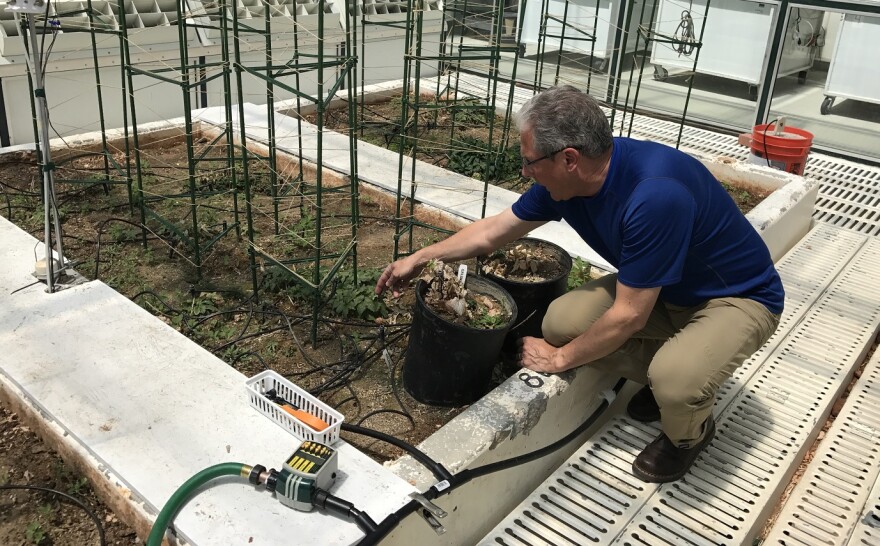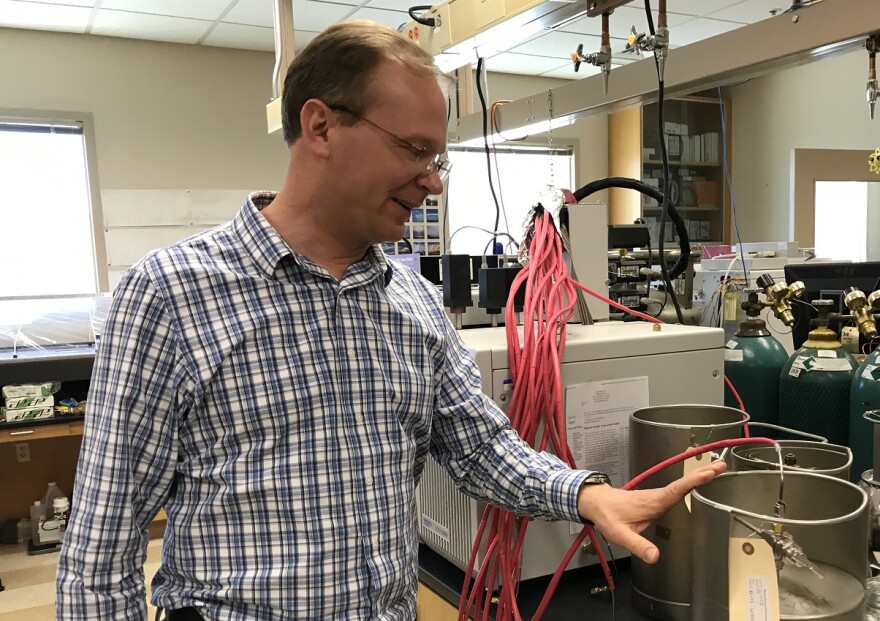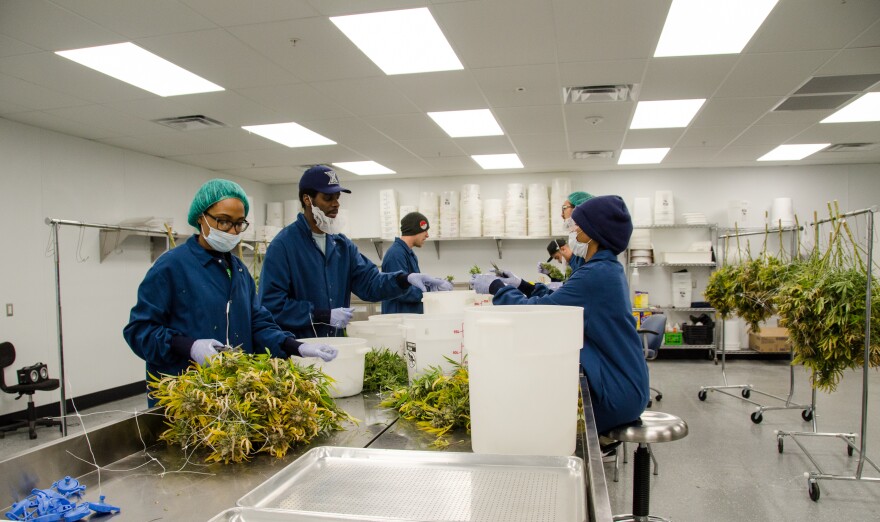Production and cultivation of marijuana are ramping up in Nevada, but development on a commercial scale comes with certain air quality challenges.
Reno Public Radio’s Noah visited a specialized greenhouse to learn more about the potential environmental impact of the cannabis industry.
Jay Arnone is an ecologist at the Desert Research Institute in Reno. And today he’s showing off their customized growing facility.
“This is a facility that was designed to be able to scale from individual plants growing in pots to plants growing together in a more natural setting,” Arnone says. “And then linking those to the field.”
We’re standing in essentially a giant cabin that’s half greenhouse, half laboratory. Inside there are four independent enclosed structures—EcoCELLS they’re called.

“These are basically like very large living rooms with a greenhouse on the roof and a basement that doesn’t get light,” he says. “So we have a natural solar cycle – day/night and seasonal. And we can create any environment inside.”
Arnone says the EcoCELLS allow scientists to measure and change pretty much everything that’s going on inside.
Last season, the facility was used to grow plants for cannabis research. But not the kind you’d expect.
“We used it to grow a surrogate, hops, under conditions that you might grow in the field,” he says.
The reason for hops is simple. DRI gets federal funding and marijuana is federally illegal. Hop plants, which are in the same family as marijuana, give scientists a starting point.

“The question that we were asking there was, ‘Can we measure with this facility the volatile organic carbon compounds that are emitted by hops?’” Arnone asks.
So let’s break this down. Volatile organic compounds, or VOCs, are essentially air pollutants. Indoors they can impact human health, and outdoors they can interact with the atmosphere to create smog.
But to truly understand their impact, Arnone says…
“You still need to measure with marijuana. You still need to measure in growing facilities.”
Andrey Khlystov did just that. He works on air quality research at DRI and took measurements at cultivation sites around the region.
“What we find is a lot of volatile organic compounds are found in those facilities,” he says.

Current laws and regulations require that all cannabis cultivation be done in a secured, enclosed space, like a locked closet or greenhouse, which exposes people—primarily employees—to those VOCs.
But the biggest risk to indoor air quality might be during extraction, a process that removes THC from marijuana, for use in things like cannabis concentrates and oils. Brayan Burgos does just that for Silver State Relief, a medical marijuana dispensary and cultivator in Sparks.
“Here is our machine. And we put butane inside of it,” he says. “It’s like a catalyst for a chemical reaction that speeds up the process to drop all the THC out of the product into our collection chamber.”
The EPA classifies butane as a “very volatile organic compound,” meaning it’s more likely to be emitted into the air and harder to measure.

Nevada OSHA, which oversees workplace safety, currently has no specific guidelines for the cannabis industry, but the agency says companies with ten or more employees must have a written workplace safety plan.
VOCs can also get outside, which is when Washoe county steps in. Michael Wolf is with the county’s air quality management division.
“If you have the potential to emit two pounds per day or greater, you have to get an air permit through us,” he says.
Wolf says to reach that threshold, cannabis facilities would need to grow roughly 100 plants per year. But according to his calculations…
“The average facility in Washoe County would grow about 10,000 plants a year,” Wolf says.

Plants and automobiles all emit VOCs outdoors, but at a small rate. Wolf says it doesn’t become a problem until there’s a high concentration in one area, like in Los Angeles where thousands of car engines can cause smog.
But still, the county has implemented some rules to limit the amount of VOCs emitted to the atmosphere.
“What we’re requiring on these marijuana facilities is that they have what’s called activated carbon somewhere between their grow rooms and their extraction rooms and the outside,” he says.
That carbon works like a filter that you might have in a home furnace, which absorbs the pollutants.
It’s one solution, but officials and researchers admit there is very little known about the cannabis industry’s impact on air quality. And with possible cuts to the EPA’s budget coupled with marijuana’s federally illegal status, much-needed research projects may not be happening anytime soon.








